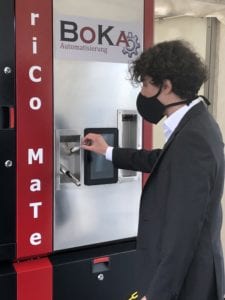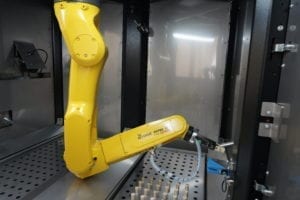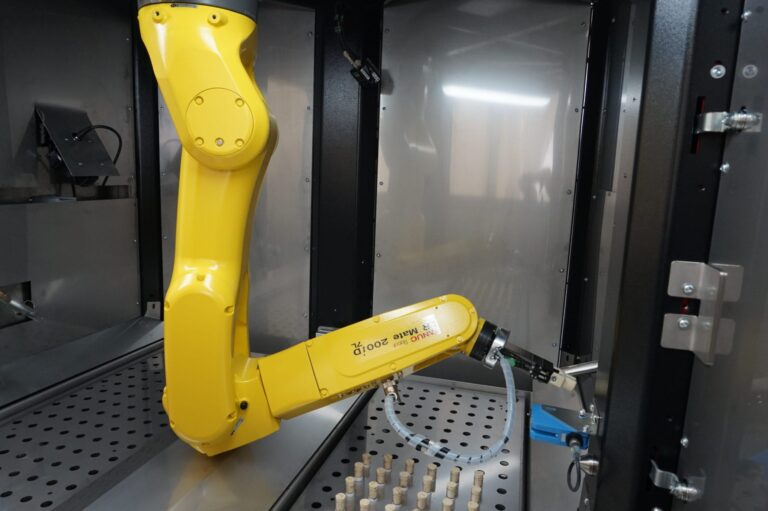Bavaria-based company BoKa Automatisierung has developed a contactless solution for automated coronavirus testing.
Instead of medical personnel, a prototype machine uses a video system and a Fanuc robot to guide tests and collect samples.
If put into practice, the system could reduce the risk of infection at test stations and free-up medical personnel for work in hospitals, nursing homes and public health agencies.
The fully automated test works either as a ‘drive-in’ or ‘walk by’ procedure.

Those suspected of having contracted coronavirus approach the test station by car or on foot.
Video instructions guide them step-by-step through the process.
At the beginning, each person disinfects their hands and scans their identity card. It is also possible to pre-register and receive a code for registration in advance. The personal data is then assigned to a test tube with a barcode.
A Fanuc robot scans the barcode and hands over the test tube to the technician, who performs the test independently with the help of video instructions.

Finally, the robot takes over the used test tube and stores it until it is transported to the laboratory.
“To ensure that each test is useable, the swab collection can be monitored via camera transmission by a medically-trained person,” explained Severin Bobon, co-owner of BoKa Automatisierung.
As the video system and robot perform a number of steps, a doctor can control several test stations simultaneously, reducing workload on other physicians and facilities that are mass testing.
According to Boban, the automated system could also be used to perform quick tests.

“Depending on the length of the explanatory video, a test takes between four and six minutes,” said Bobon.
As the test system is designed for two people at the same time, around 500 samples could be collected contact-free per day and per system in 24-hour continuous operation.
The cell uses a six-axis Fanuc LR Mate 200iD/7L long-arm robot with 911mm reach. To save space, the control system is located under the worktable.
To keep the work surface in the cell free for trays of test tubes, the robot is suspended. This allows the LR Mate to work to both sides of the worktable.
Furthermore, the trays for holding the test tubes can be adapted to the requirements of individual laboratories.
Want to read more stories like this?
https://www.roboticsandautomationmagazine.co.uk/robotic-platform-to-boost-uk-coronavirus-testing-capacity/
https://www.roboticsandautomationmagazine.co.uk/robotics-platform-enables-mass-scale-covid-19-immunity-btest/
https://www.roboticsandautomationmagazine.co.uk/can-robots-be-valuable-partners-in-times-of-crisis/









